Breeding
Kay will commence breeding on the 26th of May giving a due date for calving for the 5th Mar 2025. Calving went well with 83% of the herd calved within 6 weeks. The calving interval of the herd is 355day (see figure 1) One calf was a suspected Schmallenberg case and died at birth. There were reports of cases of Schmallenberg present locally which were confirmed by the regional veterinary labs. Kay has placed a large emphasis on breeding for fertility over the last number of years selecting bull teams with a calving interval of -5 to -6 days. This has resulted in a fertile herd with a tight calving interval. The five year trend report (see figure 2) outlines the progress made by Kay over the last 5 years with regards to herd fertility.
The herd uses 100% AI, no stock bull or vasectomised bulls are used. Kay ai’s on observed heat using the am/pm rule. Kay observes the cows for signs of heat 3 to 4 times daily for 20 to 30 minutes each. These times are spread evenly throughout the day. Two times which are critical for detecting heat are early morning and late evening. Although tail paint or scratch cards are not used Kay records heats pre breeding on ICBF (see figure 3). By doing so this allows Kay to pay particular attention to the cows which are due a heat cycle typically 19 to 21 days later. This can help decide whether or not to submit a cow for ai if you are unsure. This can be completed through the ICBF website or using a suitable farm recording package. By completing this information Kay can then run a due repeat report, this will give a reasonably good indication as to when to expect the next heat cycle. For example cow 124 has a heat recorded for the 18th of May, she is due to have her next heat on the 8th of June. This report can be ran daily throughout the breeding season using the icbf app on a smart phone. The bulls selected for 2025 are outlined below in figure 5, key traits to improve upon are carcass weight while maintaining milk and fertility. Calving ease is also an important consideration on the farm.
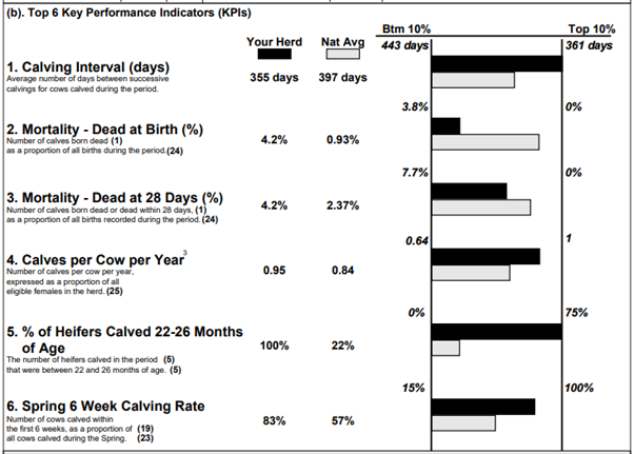
Figure 1: 2025 Calving report from ICBF
-634x353.png)
Figure 2: KPIs from 5 year trend report (Source ICBF)
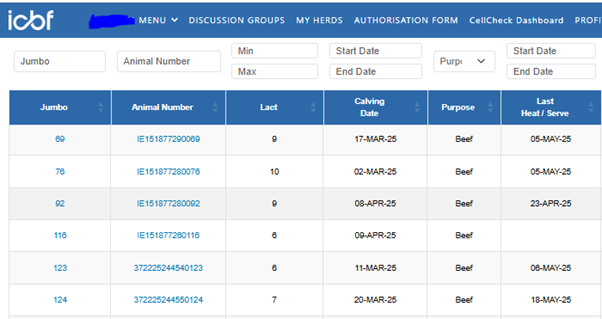
Figure 3: Heat records on ICBF
-634x155.png) Figure 4: Due repeat report (Source ICBF)
Figure 4: Due repeat report (Source ICBF)
| Replacement Index | Carcass Weight € | Daughter milk kg | Calving Interval days | |
| Herd | 145 | -1 | 5.8 | -6.24 |
|---|---|---|---|---|
| Bull Team 25 | 170 | 8.9 | 6.6 | -5.67 |
| Bulls 2025 | ||||
| AA4631 | 164 | 10.7 | 3.5 | -5.59 |
| AA4632 | 209 | 3.2 | 7.7 | -7.98 |
| AA4633 | 155 | -1.6 | 4.3 | -6.74 |
| AA9860 | 182 | 20.5 | 11.4 | -4.23 |
| AA7452 | 142 | 11.6 | 5.9 | -3.82 |
| Team Avg | 170 | 8.9 | 6.6 | -5.67 |
Figure 5: Bull team used in 2025
Animal Health
The 2024 born cattle were weighed on the 14th March and the weight gains following turnout to grass full time after grazing the redstart were 0.89 and 1.06kg per head per day for the bullocks and heifers respectively. A Faecal egg count was completed in late April and the results were negative for lung worms, stomach worms and liver fluke. Sheep are used as part of the rotational grazing system on the farm in order to reduce the worm burden at pasture, as most worms are host specific and can only complete their life cycle in only one animal species. Kay regularly carries out faecal egg sampling which involves collecting and analysing dung samples to check for the presence and quantity of parasite eggs (stomach worms, lungworms, and sometimes liver fluke). This test helps assess the worm burden in the herd, guide targeted deworming, and monitor the effectiveness of treatments.


Figure 6: Weight records for 2024 born steers and heifers
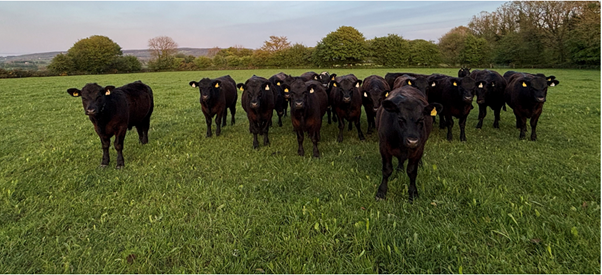
Photo 1 : 2024 born steers and heifers
Grassland
The first cut of red clover silage was taken on the 2nd of May , and yielded just over 6 bales per acre. The field received over 2500gallons of cattle slurry post cutting and will be harvested again towards the end of June, start of July. The field will receive 2500gallons of cattle slurry following each cut of red clover silage.
The field where the redstart crop was in 2024/2025 has been reseeded with a multi species mix containing, red and white clover, plantain, chicory, perennial ryegrass and timothy grass. The seedlings began germinating around the 24th of April.
The clover has germinated in the paddocks which were oversown with white clover using the gator and electric seeder in 2024. The key to establishing clover in these paddocks is to graze these paddocks at lower covers for the duration of the 2025 grazing season. Figure 8 shows the amount of clover present. These paddocks also received 2500gallons of cattle slurry per acre following oversowing.
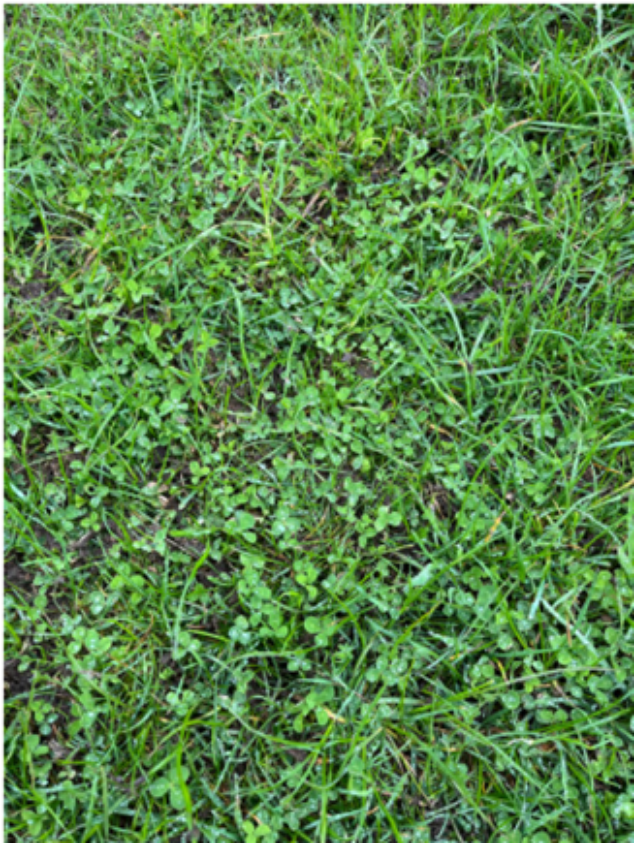 Picture 2: Paddocks previously oversown with clover showing update of clover
Picture 2: Paddocks previously oversown with clover showing update of clover
There is a high farm cover of 1081 kg of dm per hectare on the farm. The cover was completed on the 24th of May showing a growth rate of 41kg/dm/ha for the previous week. The demand is 27kg of dm/ha meaning paddocks will be taken out for bales in order to maintain pre grazing covers of 1400 to 1600kg of dm/ha and a rotation length of 25 days.
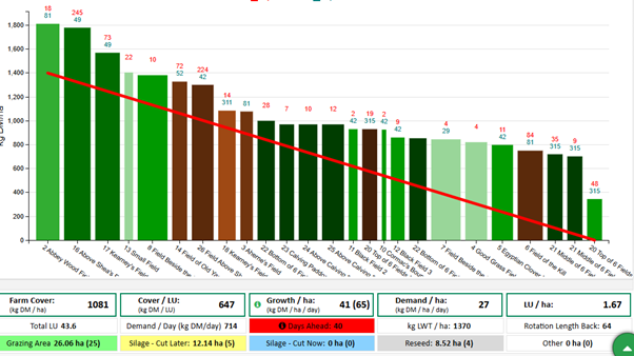
Figure 7: Grass wedge from the 24th May 2025.
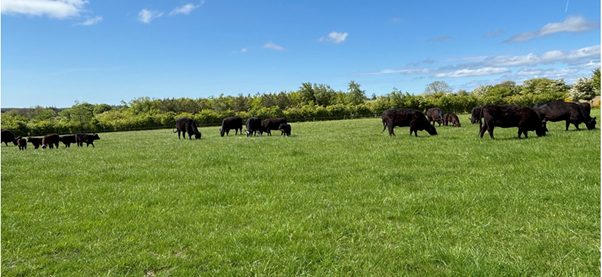
Photo 3: 2025 born calves with cows
